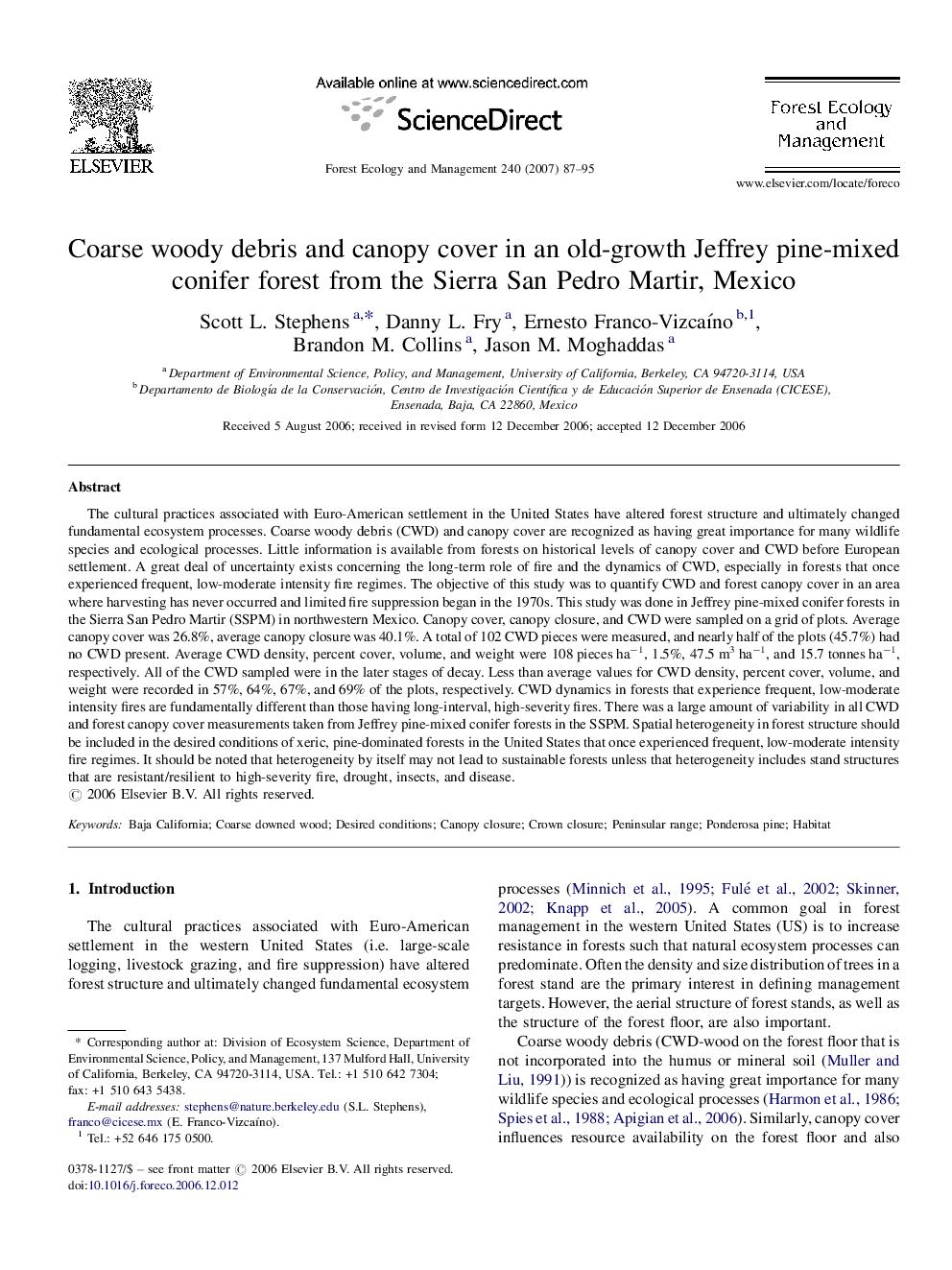| کد مقاله | کد نشریه | سال انتشار | مقاله انگلیسی | نسخه تمام متن |
|---|---|---|---|---|
| 89718 | 159353 | 2007 | 9 صفحه PDF | دانلود رایگان |

The cultural practices associated with Euro-American settlement in the United States have altered forest structure and ultimately changed fundamental ecosystem processes. Coarse woody debris (CWD) and canopy cover are recognized as having great importance for many wildlife species and ecological processes. Little information is available from forests on historical levels of canopy cover and CWD before European settlement. A great deal of uncertainty exists concerning the long-term role of fire and the dynamics of CWD, especially in forests that once experienced frequent, low-moderate intensity fire regimes. The objective of this study was to quantify CWD and forest canopy cover in an area where harvesting has never occurred and limited fire suppression began in the 1970s. This study was done in Jeffrey pine-mixed conifer forests in the Sierra San Pedro Martir (SSPM) in northwestern Mexico. Canopy cover, canopy closure, and CWD were sampled on a grid of plots. Average canopy cover was 26.8%, average canopy closure was 40.1%. A total of 102 CWD pieces were measured, and nearly half of the plots (45.7%) had no CWD present. Average CWD density, percent cover, volume, and weight were 108 pieces ha−1, 1.5%, 47.5 m3 ha−1, and 15.7 tonnes ha−1, respectively. All of the CWD sampled were in the later stages of decay. Less than average values for CWD density, percent cover, volume, and weight were recorded in 57%, 64%, 67%, and 69% of the plots, respectively. CWD dynamics in forests that experience frequent, low-moderate intensity fires are fundamentally different than those having long-interval, high-severity fires. There was a large amount of variability in all CWD and forest canopy cover measurements taken from Jeffrey pine-mixed conifer forests in the SSPM. Spatial heterogeneity in forest structure should be included in the desired conditions of xeric, pine-dominated forests in the United States that once experienced frequent, low-moderate intensity fire regimes. It should be noted that heterogeneity by itself may not lead to sustainable forests unless that heterogeneity includes stand structures that are resistant/resilient to high-severity fire, drought, insects, and disease.
Journal: Forest Ecology and Management - Volume 240, Issues 1–3, 15 March 2007, Pages 87–95